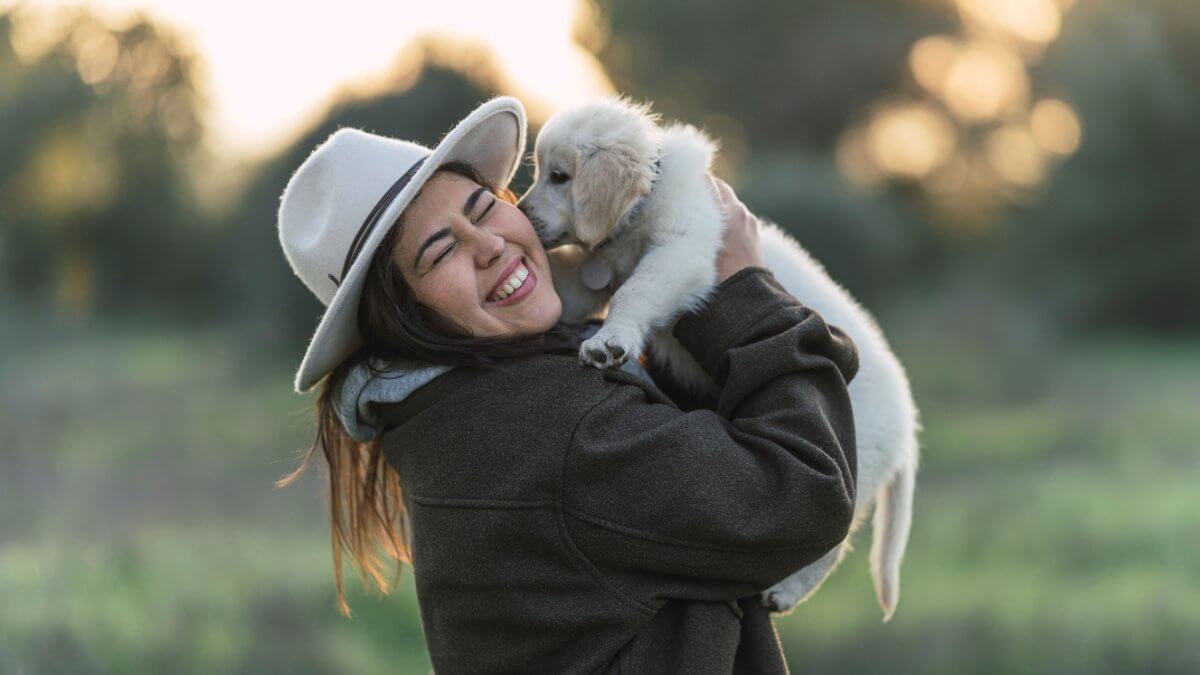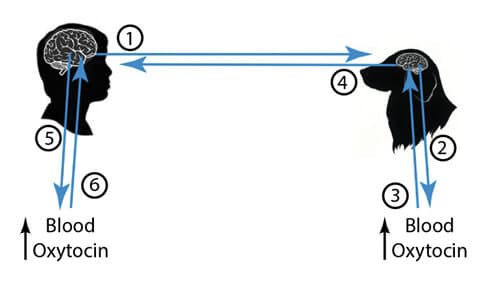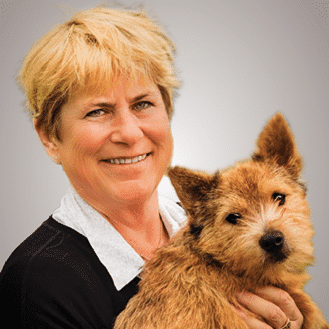
Home » Love, Actually – How a Tiny Peptide Drives Our Passion for Dogs

Oxytocin. Most of us think of it as the hormone that helps bitches whelp and produce milk. And yes, it’s that, but oxytocin is so much more. A series of recent studies have revealed how oxytocin has a major effect on the brains of people and dogs to strengthen the human-canine bond—that indescribable interspecies attachment that might just explain why you’re reading this.
Oxytocin is a peptide hormone that is secreted into the blood from the pituitary, a pea-sized structure at the base of the brain, although it also can be made in many other cells of the body. Its size—just 9 amino acids long—truly belies its important role in how people and dogs respond to the world around them.
Oxytocin plays an important role in human communication. When a mother gazes at her infant, attachment begins to develop. You may be familiar with imprinting, in which an orphan baby duck becomes attached to a human and begins to follow the person around. Human attachment is a more sophisticated version of this phenomenon and is the basis of interpersonal relationships.
Oxytocin plays other roles in humans as well—it’s called the “love hormone” for a reason. Oxytocin makes you feel good when you’re with someone you love by stimulating the reward center in your brain, and it also reduces stress. When you listen to calming music or sing in a choir, for example, your brain tells the pituitary to release oxytocin into the blood. This slows your heart rate and lowers your blood pressure.
Oxytocin makes you feel good when you’re with someone you love by stimulating the reward center in your brain, and it also reduces stress.
Recently, scientists have been studying the role of oxytocin in the human-canine bond. It was already known that interactions between humans and dogs caused oxytocin release into the blood stream of both species. To understand more about the mechanism of this mutual hormonal response, researchers performed experiments to ask the following questions: Is gaze important for mutual oxytocin release between humans and dogs like it is for mothers and infants? And does mutual oxytocin release happen between humans and hand-raised wolves or just with dogs?

To answer these questions, researchers measured urine oxytocin levels in dogs, or hand-raised wolves, and their people before and after spending 30 minutes alone in a room together with a video camera recording their interactions. During that time, the owners could gaze at the dogs or wolves, talk to them, and touch them.
Results: Dogs differed in the amount of time that they would gaze at their owners. In fact, the dogs could be divided into long gazers and short gazers. Long gazers induced significantly higher mutual oxytocin levels in both the people and in themselves during the 30-minute interaction, whereas short gazers and hand-raised wolves did not.
Conclusion: As in the relationship between mother and child, humans interacting with dogs (but not wolves) experience gaze-induced mutual oxytocin secretion, and the longer the gaze, the higher the resulting oxytocin levels in both humans and dogs (and the better both feel). This hormonal interaction is called the oxytocin-gaze positive loop. The figure above illustrates the steps that are involved in this positive feedback loop.
Why don’t you try a little experiment now? Sit down and gaze into your dog’s admiring eyes. Now think about how it makes you feel. It might seem silly, but just go ahead and do it. When you think about your feelings, do the words “calm,” “love,” “peaceful,” “happy,” and/or “content” come to mind? If they do, then you are experiencing the oxytocin-gaze positive loop!
As a dog lover, I am sure that you can connect with the following closing statements in the researchers’ publication: “These results suggest that humans may feel affection for their companion dogs similar to that felt toward human family members…”
You can’t help it—it’s a chemical attraction!
